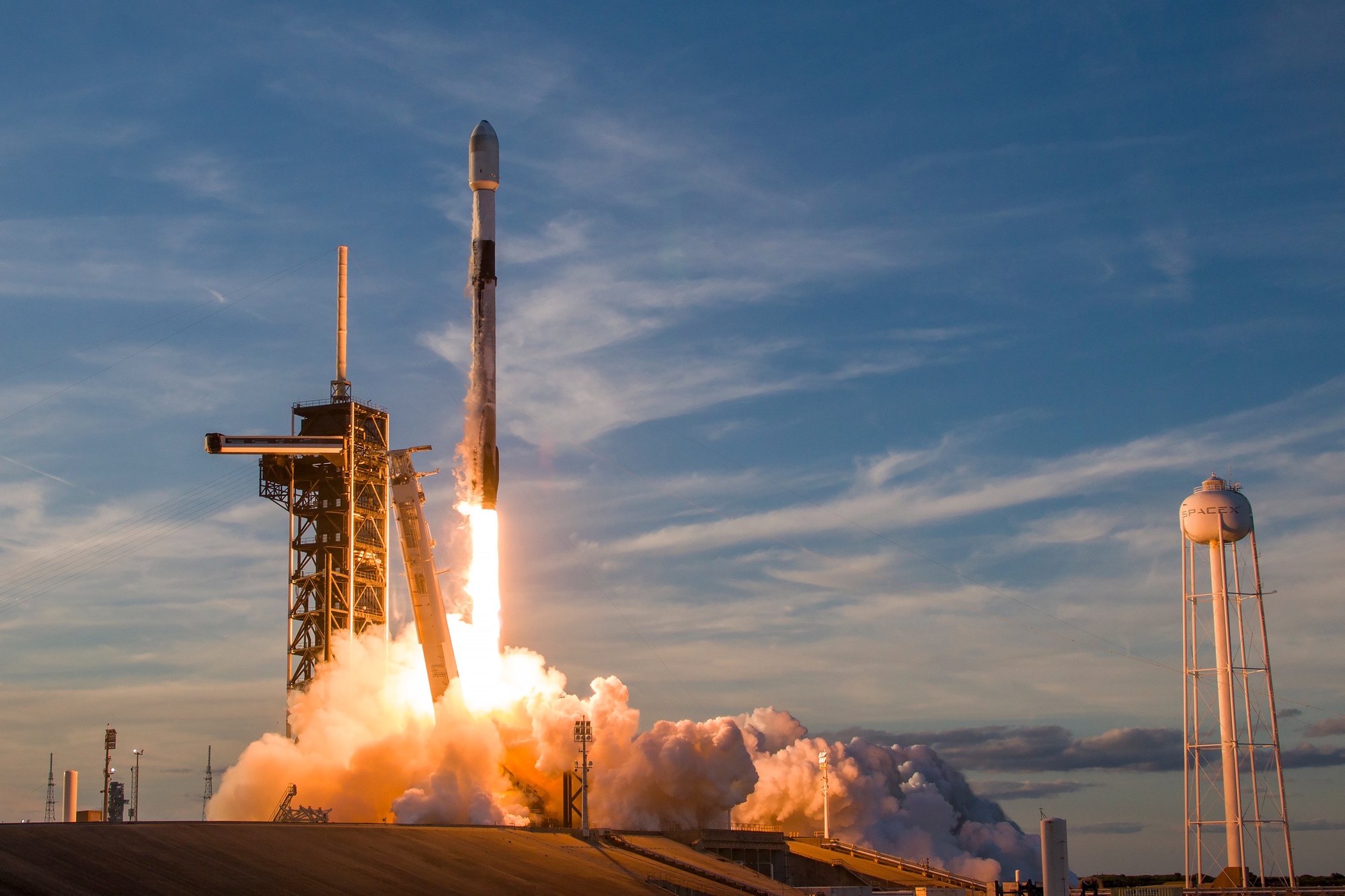SpaceX launches first mid-inclination dedicated rideshare mission

COLORADO SPRINGS — SpaceX launched the first in a new line of dedicated rideshare missions April 7, delivering 11 commercial and military satellites into mid-inclination orbits.
A Falcon 9 lifted off from Kennedy Space Center’s Launch Complex 39A at 7:16 p.m. Eastern on the Bandwagon-1 mission. The rocket’s first stage, making its 14th flight, landed back at Cape Canaveral’s Landing Zone 1 seven and a half minutes after liftoff.
The launch was the first for a new series of dedicated rideshare missions intended to complement SpaceX’s existing Transporter missions. Unlike Transporter missions, which launch payloads into sun-synchronous orbits commonly used by remote sensing satellites, the Bandwagon missions are intended to send payloads to low Earth orbits at inclinations of about 45 degrees.
SpaceX announced the Bandwagon missions at the Small Satellite Conference last August, with plans to fly two such missions in 2024 and again in 2025. The company said at the time that mid-inclination orbits were the second most commonly asked orbit among rideshare customers after sun-synchronous orbits.
Bandwagon-1 carried 11 satellites, with the largest likely to be a “425 Project” satellite for South Korea’s military. The government’s Defense Acquisition Program Administration announced in 2022 it would launch five satellites, four with synthetic aperture radar (SAR) payloads and one with an optical/infrared payload, with SpaceX through 2025. The first 425 Project satellite, the one optical/infrared spacecraft, launched on a Falcon 9 in December 2023.
HawkEye 360 flew six of its radio-frequency geolocation satellites, called Clusters 8 and 9, on Bandwagon-1. Other payloads include Capella Space’s Acadia-4 SAR satellite, the QPS-SAR-7 SAR satellite from iQPS, Fleet’s Centauri-6 satellite for Internet of Things services and TSAT-1A, an Earth imaging satellite built by Tata Advanced Systems Limited in cooperation with Satellogic.
Customers said they chose to fly their satellites on Bandwagon-1 because the mid-inclination orbit offered improved coverage over low and mid latitudes compared to sun-synchronous orbits. HawkEye 360, for example, noted in a statement that placing the Cluster 8 and Cluster 9 satellites in those orbits “will further support HawkEye 360’s work to help monitor and prevent Illegal, Unreported, and Unregulated (IUU) fishing across the Indo-Pacific region.”
SpaceX says it continues to see strong interest in its rideshare missions, both Transporter and Bandwagon. “We heard loud and clear from customers they wanted these services,” Stephanie Bednarek, vice president of commercial sales at SpaceX, said during a panel at the Satellite 2024 conference March 18. “It’s going great and we’re really happy.”
For the rideshare programs to be effective, she said customers have to be willing to fit in the company’s standard accommodations. “We would ideally like to see our customers design to the standard services that we provide,” she said, although the company does offer add-on services for rideshare missions. “Now that it’s been demonstrated several times, we’re seeing more and more customers that are designing to that particular box and service that we offer.”
Related
Read the original article here






